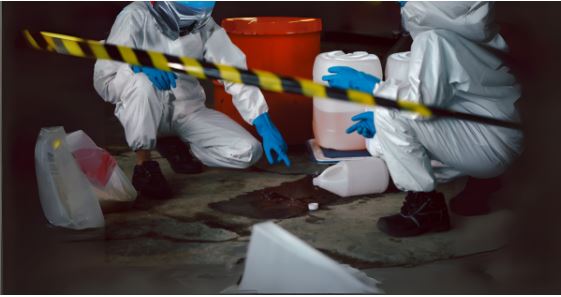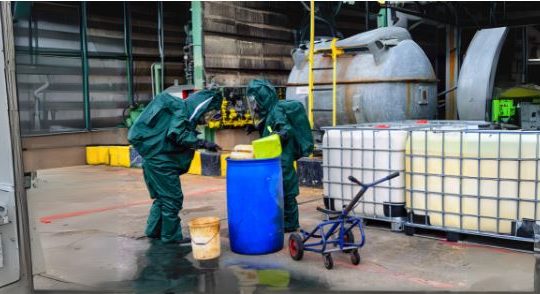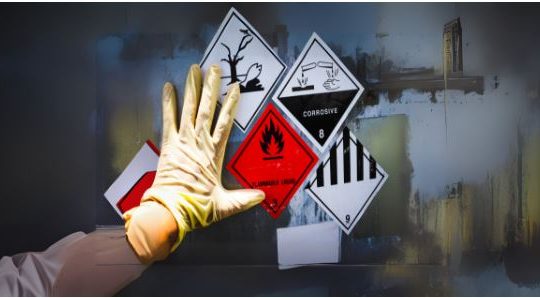
SPILL CONTROL
Course Overview
The Spill Control Training course is designed to equip individuals with the skills and knowledge to handle spills of hazardous and non-hazardous substances effectively. This training focuses on preventing environmental damage, ensuring workplace safety, and complying with regulatory requirements. It is suitable for professionals in industries such as manufacturing, oil and gas, construction, and logistics, where spill risks are prevalent.
Benefits
- Environmental Protection: Minimize the impact of spills on the environment by implementing effective control measures.
- Workplace Safety: Learn to reduce risks associated with spills, protecting employees and assets.
- Regulatory Compliance: Ensure adherence to environmental and health safety regulations.
- Enhanced Skills: Gain practical techniques for containment, cleanup, and waste disposal.
- Proactive Preparedness: Be equipped to respond effectively to emergencies and minimize downtime.
Learning Outcomes
By the end of the training, participants will:
- Understand the types of spills and their potential impacts.
- Identify appropriate spill control equipment and materials.
- Develop a spill response plan tailored to workplace needs.
- Demonstrate proper containment and cleanup procedures.
- Handle hazardous substances safely to prevent spills.
- Understand legal obligations for reporting and documenting spills.
- Improve overall workplace spill management protocols.
Study Units
- Introduction to Spill Control
- Overview of spill control and its importance in workplace safety.
- Understanding common causes and types of spills.
- Risk Assessment and Planning
- Identifying spill risks in your work environment.
- Developing and implementing a spill response plan.
- Spill Containment Techniques
- Practical methods for controlling spill spread.
- Using absorbent materials, booms, and barriers effectively.
- Cleanup and Waste Management
- Safe methods for cleaning spills of hazardous and non-hazardous materials.
- Proper disposal of contaminated waste following regulations.
- Using Spill Control Equipment
- Selecting and maintaining spill kits and PPE.
- Hands-on training with containment tools and materials.
- Regulatory and Reporting Requirements
- Legal obligations for spill control and reporting.
- Documenting spill incidents for compliance and review.
- Emergency Response Procedures
- Steps to handle large-scale spills.
- Coordinating with emergency response teams.
- Prevention Strategies
- Best practices to prevent spills and enhance workplace safety culture.
- Routine inspections and employee training.
Career Progression
Completing the Spill Control Training opens up opportunities for roles such as:
- Health and Safety Officer: Ensure workplace readiness to handle spill incidents.
- Environmental Compliance Specialist: Focus on minimizing environmental risks and ensuring compliance with regulations.
- Emergency Response Coordinator: Lead spill control and recovery efforts during emergencies.
- Logistics or Warehouse Manager: Oversee safe storage and handling of materials prone to spills.
- Site Supervisor: Manage on-site safety and spill control measures.
Our assessment process is designed to ensure every learner achieves the required level of knowledge, skills, and understanding outlined in each course unit.
Purpose of Assessment
Assessment helps measure how well a learner has met the learning outcomes. It ensures consistency, quality, and fairness across all learners.
What Learners Need to Do
Learners must provide clear evidence that shows they have met all the learning outcomes and assessment criteria for each unit. This evidence can take different forms depending on the course and type of learning.
Types of Acceptable Evidence
Assignments, reports, or projects
Worksheets or written tasks
Portfolios of practical work
Answers to oral or written questions
Test or exam papers
Understanding the Structure
Learning outcomes explain what learners should know, understand, or be able to do.
Assessment criteria set the standard learners must meet to achieve each learning outcome.
Assessment Guidelines
All assessment must be authentic, current, and relevant to the unit.
Evidence must match each assessment criterion clearly.
Plagiarism or copied work is not accepted.
All learners must complete assessments within the given timelines.
Where applicable, assessments may be reviewed or verified by internal or external quality assurers.
Full learning outcomes and assessment criteria for each qualification are available from page 8 of the course handbook.
Top Courses
No results found.
Related Courses
Let's Get in touch
Deleting Course Review
Course Access
This course is password protected. To access it please enter your password below:



